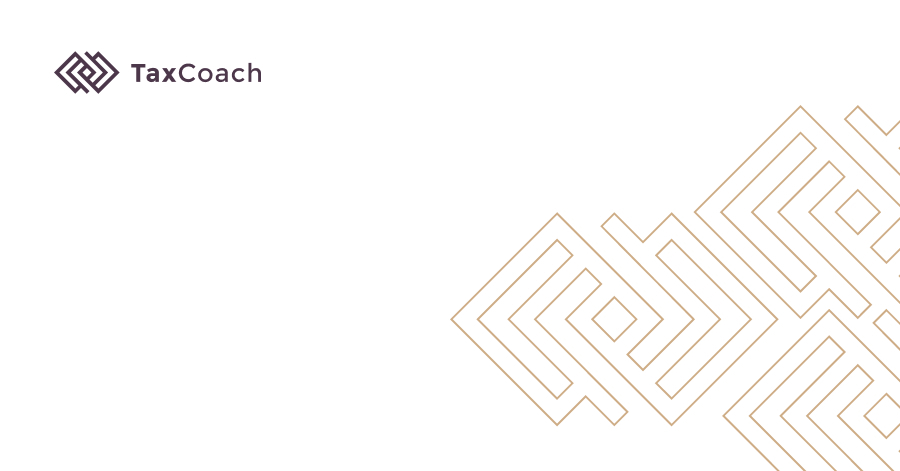
What forms of taxation are permitted by the Polish laws?
Benjamin Franklin, whose image appears on the American hundred-dollar banknote went down in history not only as one of the founding fathers of the United States. For nearly three centuries, his saying has been repeated - "In this world only death and taxes are certain." In our country, all entrepreneurs running a business are required to pay tax on their income. The methods of taxation that we can use are different and there is no ready formula that can be used when making a choice.
In this article, we will try to facilitate this task by describing in detail all possible forms of business taxation in Poland.
Taxation of economic activity at the start and a change in the form of taxation.
Choosing the form of taxation by a taxpayer starting his adventure with his own business differs from the decision of a taxpayer who continues business, who wants to change to a different one than before. Taxpayers starting a business choose the form of business taxation on the CEIDG form at the time of company registration. A newly-minted entrepreneur can choose from the following forms of business taxation:
- General rules
- Linear scale
- Lump sum on recorded revenues
- Tax card
If we decide on taxation methods such as: linear scale, lump sum or tax card, we must submit an appropriate letter to the competent head of the tax office.
The taxation form that has been chosen is valid throughout the year. However, modern economic realities are changing very dynamically. Already in the course of the current activity of our company, it may turn out that other possible methods of taxation of activities in Poland will be more favorable. In such a case, it is possible to change the current form of business taxation to another. The operation can be made at the beginning of the tax year, by the deadline of January 20.
Characteristics of individual forms of taxation
Form of taxation of income according to the tax scale ("general rules")
Any person running a business can settle accounts according to the tax scale. In this case, the tax on economic activity is calculated on the income, therefore the excess of the sum of revenues over the sum of costs.
Taxation of economic activity according to the tax scale.
The form of taxation of business activity, taking into account tax thresholds, gives entrepreneurs measurable benefits. First of all, the possibility of including costs in the tax base is a big advantage. It is very often a good choice in the beginning of operations when costs are high and revenues have not yet reached the forecast level. Additional advantages of the progressive tax scale are the possibility of using tax reliefs, i.e. Internet relief, child relief, rehabilitation relief, as well as the possibility of joint settlement with the spouse and the possibility of deducting the loss incurred in the previous period.
Flat tax - a form of taxation for companies with high income
The flat-rate tax is beneficial in the case of achieving high income from business activity (over PLN 100,000). Income is calculated as follows: revenues are reduced by the costs of obtaining them. The advantage of the flat tax over the progressive tax scale is the fact that the taxation is fixed at 19%, regardless of the increase in the company's income. The disadvantage is the inability to take advantage of discounts and deductions. Choosing this type of form, it is also not possible to settle accounts jointly with the spouse.
Flat-rate methods of taxation
The next option to choose the form of taxation is a lump sum on recorded revenues, which provides the following percentage thresholds:
20% - on revenues from activities related to specific liberal professions. doctors, veterinarians, midwives and nurses, translators and teachers to a certain extent.
17% - on revenues from the provision of certain intangible services, incl. rental of passenger cars, hotels, brokerage in wholesale trade,
8.5% - on revenues, incl. from service activities, including revenues from catering activities in the sale of beverages with an alcohol content above 1.5%,
5.5% - on revenues, incl. from manufacturing and construction activities,
3% - on revenues, incl. from service activities in the field of retail trade and catering activities, except for revenues from the sale of beverages containing more than 1.5% alcohol.
In addition, this method of taxation may be chosen by a taxpayer who meets the following conditions:
- revenues obtained from the conducted activity may not exceed
EUR 150,000 in the year preceding the tax year,
- cannot benefit from taxation in the form of a tax card when starting a business.
Tax card - a simple form of corporate taxation
A tax card is the easiest way to settle your income tax. It can be used by small entrepreneurs dealing in retail trade, transport services and gastronomy. In this case, there is no obligation to submit statements, keep books, or make tax advances. It is the duty of the card's taxpayers to issue invoices at the customer's request confirming the sale and to keep copies of these documents for a period of five years, starting from the end of the year in which the invoice or bill was issued. The tax will be calculated on the basis of the number of employees and the number of inhabitants of the town where the activity is performed.
How do I pay my taxes?
Monthly billing
After choosing the form of taxation, we still have to choose the method of tax payment. Generally, payments should be made monthly by the 20th of each month for the previous month. Both in the case of the tax scale and the flat tax, advance payments for income tax are calculated in a cumulative manner from the beginning of the year. However, in the case of a lump sum on recorded revenues, they are calculated specifically for a given month. The disadvantage of the monthly method of paying the tax is the smaller amount of cash that remains available to entrepreneurs. This slows down investments and increases dependence on timely payments from contractors.
Quarterly settlement
The aforementioned problems with the monthly payment of tax affect to a lesser extent entrepreneurs who pay quarterly. Having more cash at their disposal, they can benefit from more effective financial liquidity. This allows them to offer their customers longer payment periods. The schedule of quarterly payments is as follows:
I quarter - until the 20th of April
II quarter - until th 20th of July
3rd quarter - until 20th of October
IV quarter - until 2oth of January
If the advance payment deadline falls on a Saturday or a public holiday, it is postponed to the first working day following the holiday.
Simplified advances
The last way of paying tax is the so-called Simplified advances. With this method, advance payments for income tax are made in the amount of 1/12 of the tax amount calculated according to the scale for a given tax year on the income obtained from non-agricultural business activity, shown in the annual tax return. Advance payments are made by the 20th day of each month for the previous month.





.jpg)
.jpg)
.jpg)


